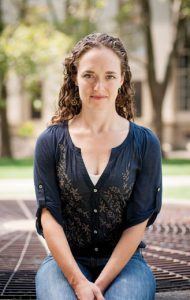(1) How can we find out how the brain works?
It’s hard to discover specific new facts about brains — how synaptic strengths change, how a population of neurons’ activity changes over seconds, how brain networks change over weeks and decades. But the biggest challenge for understanding “how the brain works” is making the right bridges across levels of analysis. A satisfying explanation will have to show how phenomena at each higher level can be explained in terms of the operation of components at the next lower level. These include how thoughts and behaviors can be understood in terms of activity in neural populations; and how such aggregate activity is composed of the biophysical structure of neurons. I expect that progress will likely be made once both “sides” of the bridge can be expressed mathematically, that is, when we have a formal quantitative vocabulary that can capture the relevant properties of thoughts and of neural populations; or of neural populations and of neuron biophysics. In my view, a critical open question is: will principles developed for one part of cognition (e.g. object recognition) generalize rather well, or rather badly, to other parts of cognition (e.g. language understanding)?
(2) What will your talk at CCN 2017 be about?
How we understand others’ emotions. Humans observers can recognize and reason about highly-differentiated, or fine-grained, emotions. We recognize anxiety in our friends, distinguish their anxiety from their disappointment or regret, and try to respond in appropriate ways; but how do we make such specific and accurate emotion attributions to another person? I will argue that human emotion understanding does not rely (much) on sensitive perception of dynamic emotional expressions in faces, bodies or voices. Rather, human emotion understanding depends on understanding the “context” of a person’s emotional expressions. And I will argue that what “context” means here, is a representation of how events and outcomes affect her desires, constraints, values, and causal power. Thus, a computational model of emotion understanding requires a model of intuitive reasoning about others’ mental states. I will sketch our plans for such a model. And in so doing, I will give an example of the potential for computational cognitive neuroscience: combining computational models of cognition, with computational techniques for analysis of neuroscientific data.
(3) How can cognitive science, computational neuroscience, and artificial intelligence best work together?
The most important challenge for these inter-disciplinary efforts is to develop strong bridging hypotheses and proposals for how to connect phenomena across levels of analyses. In the end, we will only understand the human mind when we can describe its phenomena, in quantitative detail, at each level of analysis (society, behavior, systems, cells), but also can articulate how the levels relate to each other. Bridging hypotheses are like a dictionary, translating between different languages.
I hope that in the future, cognitive science will describe a horizon of the kinds of problems worth solving. Cognitive scientists work on the kinds of problems that need to be solved not only to understand how human minds work, but also to create machines that function in a human world.
(4) What current developments are you most excited about?
I am excited about the push to study increasingly complex cognitive (and social) phenomena in rodent models, bringing the scale of that research to hard problems in cognition. I am excited about the development of tools to probe the ‘code’ of neural populations through dense recording. I am excited about the push for replicability and transparency in fMRI research. And I am excited about the emerging cognitive neuroscience of human infant brains — which I am working on! But probably won’t talk about this year.
(5) What do you hope to learn at CCN 2017?
I am very excited for CCN 2017 — more than I’ve been for a conference in quite a while! I wish I could be there to hear all of the talks, because the list of speakers looks so exciting.
